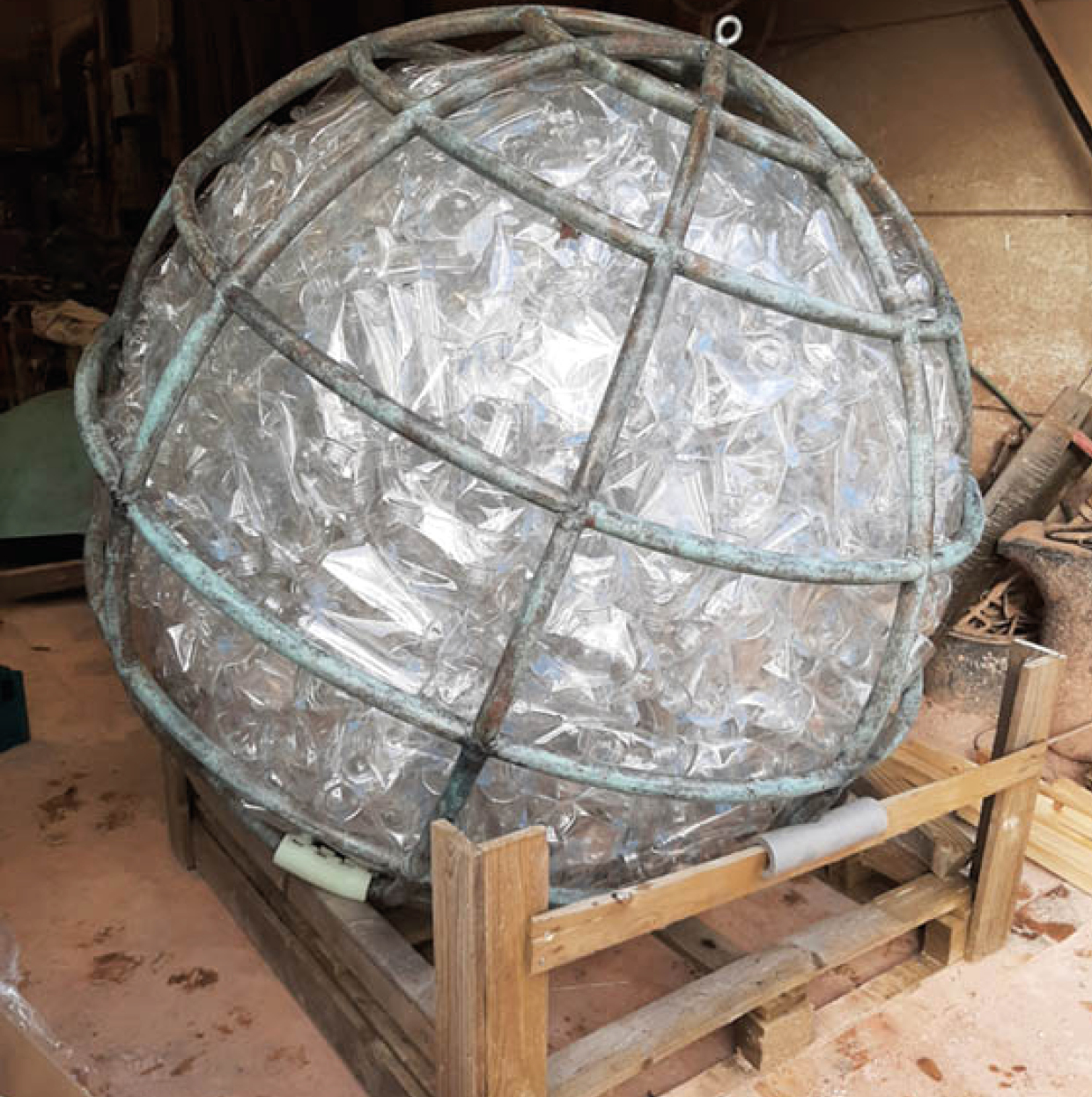THE 20 STAGES OF MAKING A BRONZE CAT
Stage 16:
The fountains
Three of the 20 sculptures have fountains (another tradition in public statues). Three different approaches and three new technical challenges.
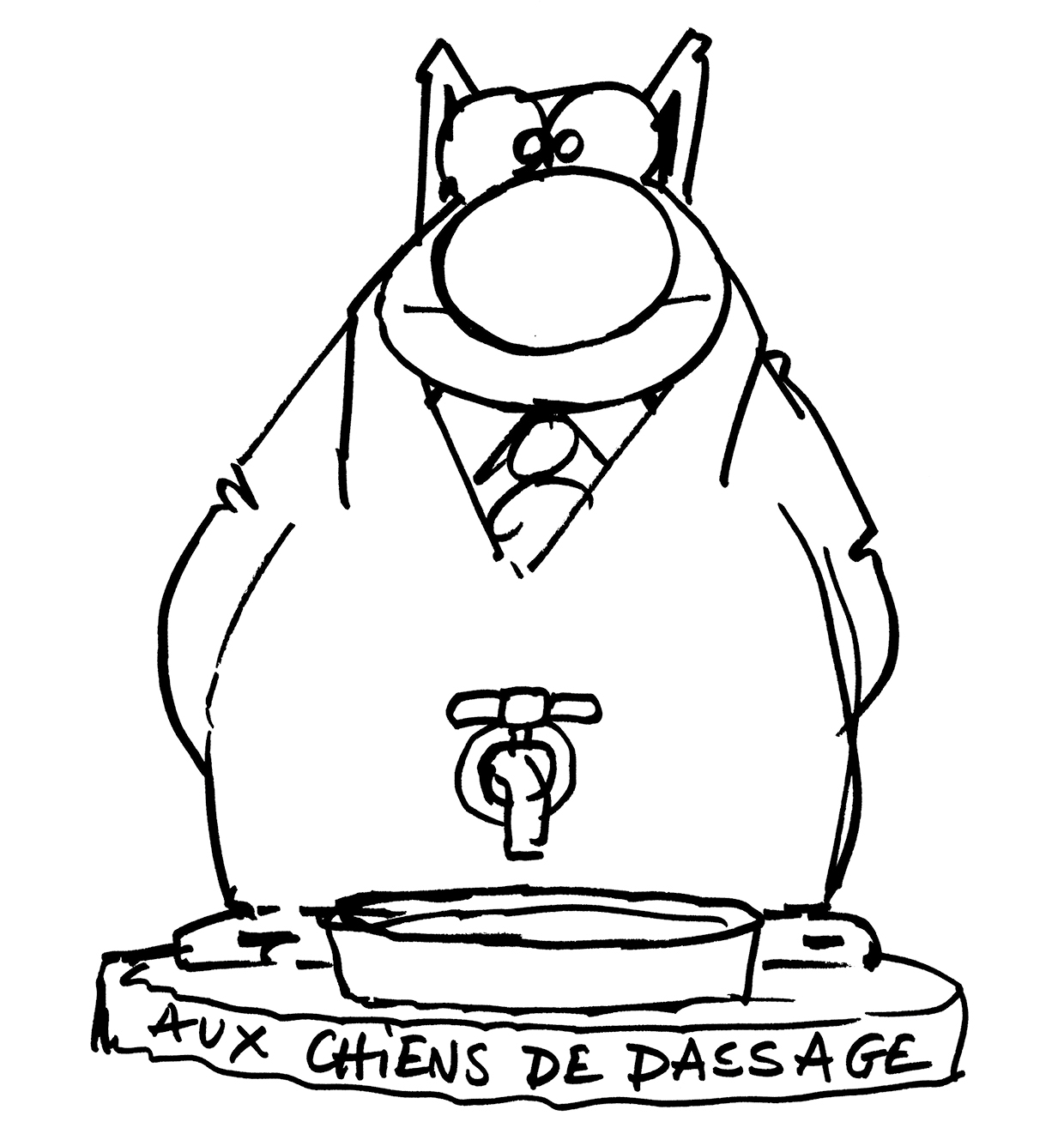
For passing dogs
A professional fountain engineer created each installation, hiding in the base a hi-tech pump, several filters and a water disinfection system – because it has to remain clean and pure, even though we are legally obliged to put a sign on each base that the water is not drinkable.
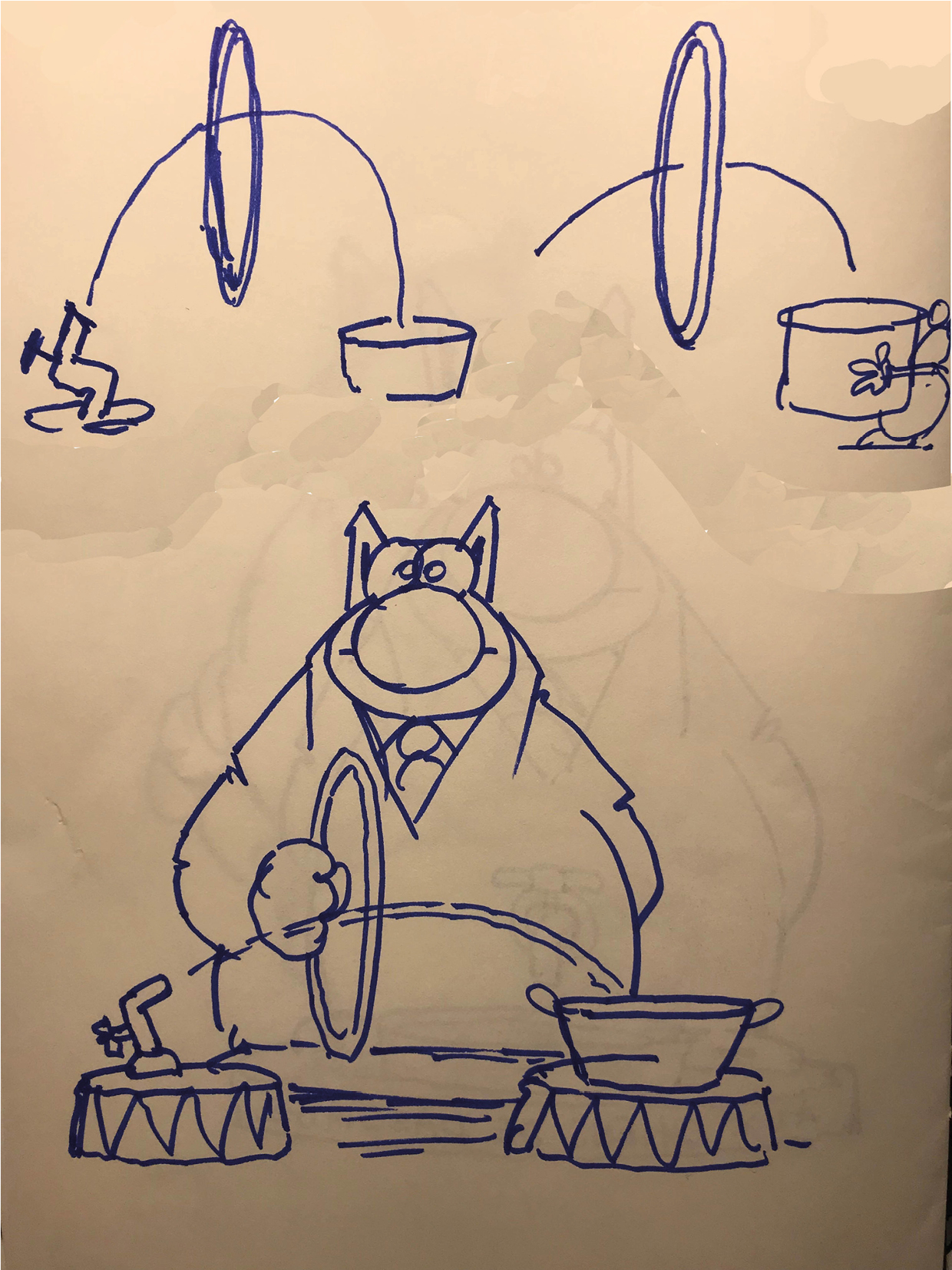
Stage 17:
How to crush a car
I had the idea of crushing a car with a huge bronze Cat while I was in the office of the director of a car dealership (who wanted to buy one of the huge statues). The man and his wife couldn’t stop laughing, and he finally chose another statue to put in his garden.

I shall remember the ‘squashing’ session for the rest of my life. We first thought of actually dropping the sculpture onto the car from a crane, 10 metres up, but it was too risky. The statue might have broken, and/or the car might not have been flattened.
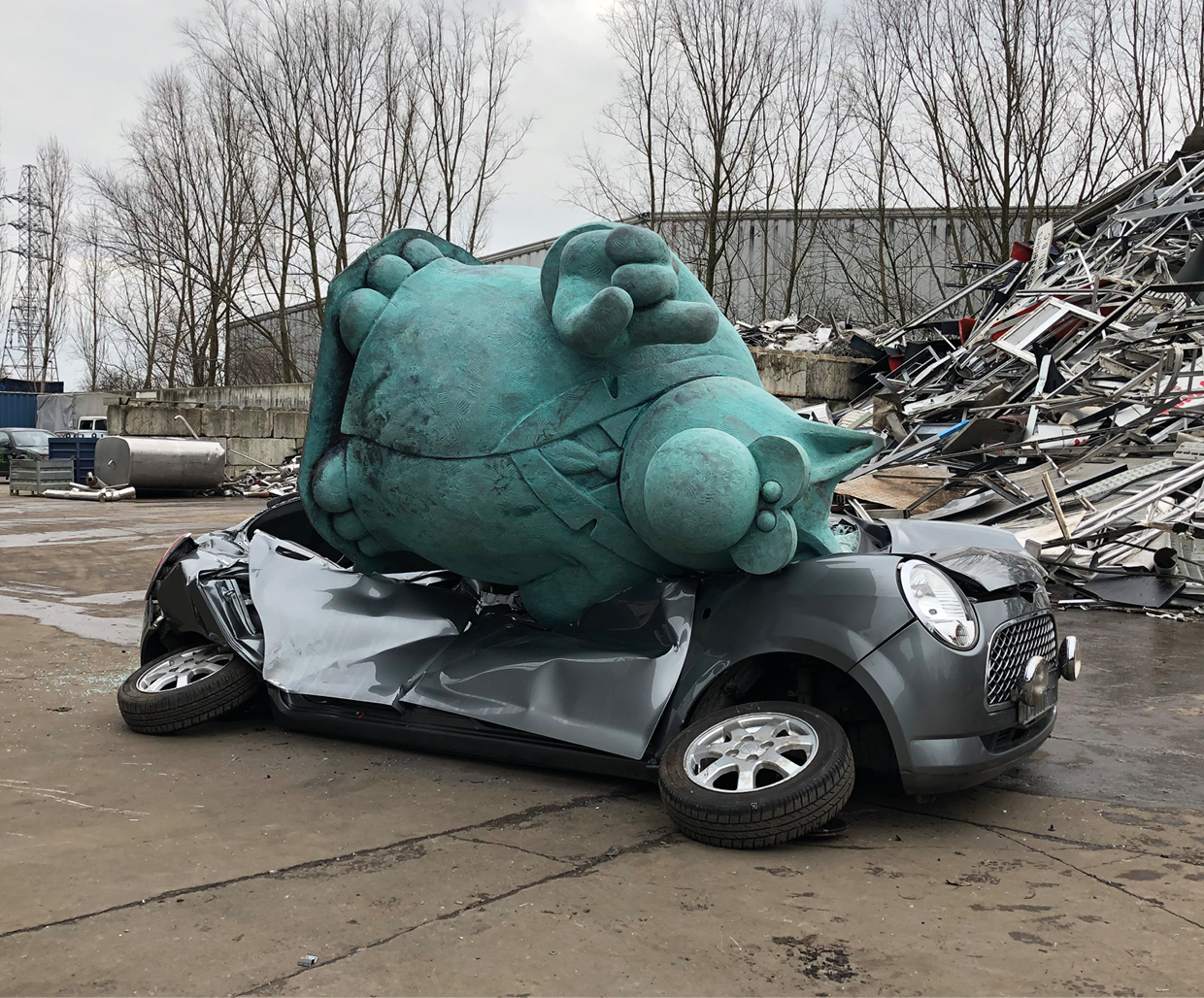
But the claw crane did the job in a fraction of a second. The most complicated part was afterwards, to bend and grind parts of the car to make the ‘cradle’ in which Le Bronze Cat would lie.
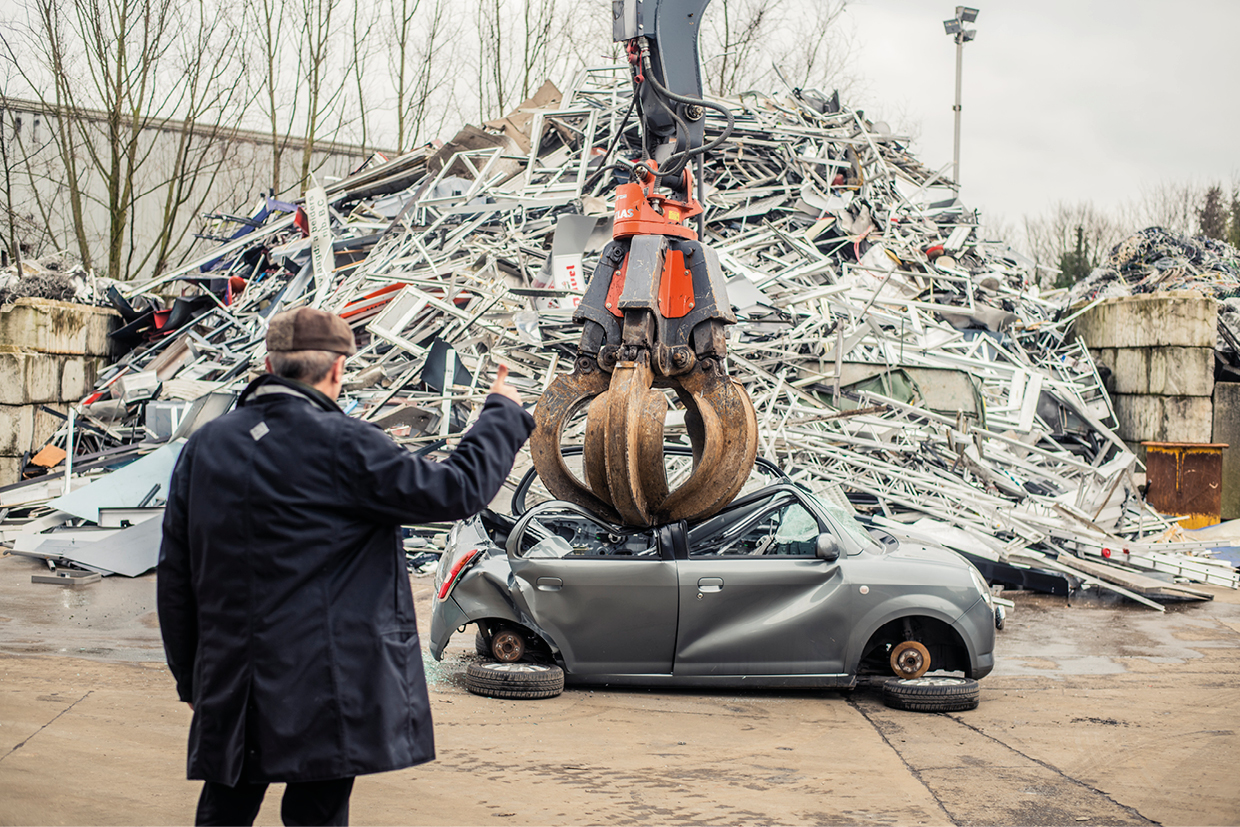
It’s in situations like this that you realise how lucky you are to work with people like Thiry and Jo, because when it was finished, you really have the impression that Le Cat has fallen on the car.
Stage 18:
Plastic waste
How do show the pollution that plastic creates unless you use plastic? It’s a bit of a paradox, but it works. We originally thought of filling the sphere carried by the Atlas-Cat with bottles of mineral water, fizzy drinks, and a bunch of the other cans and plastic containers. We would need a thousand of these. But after a few trials we realised that it would be ugly, unhygienic and not very attractive.
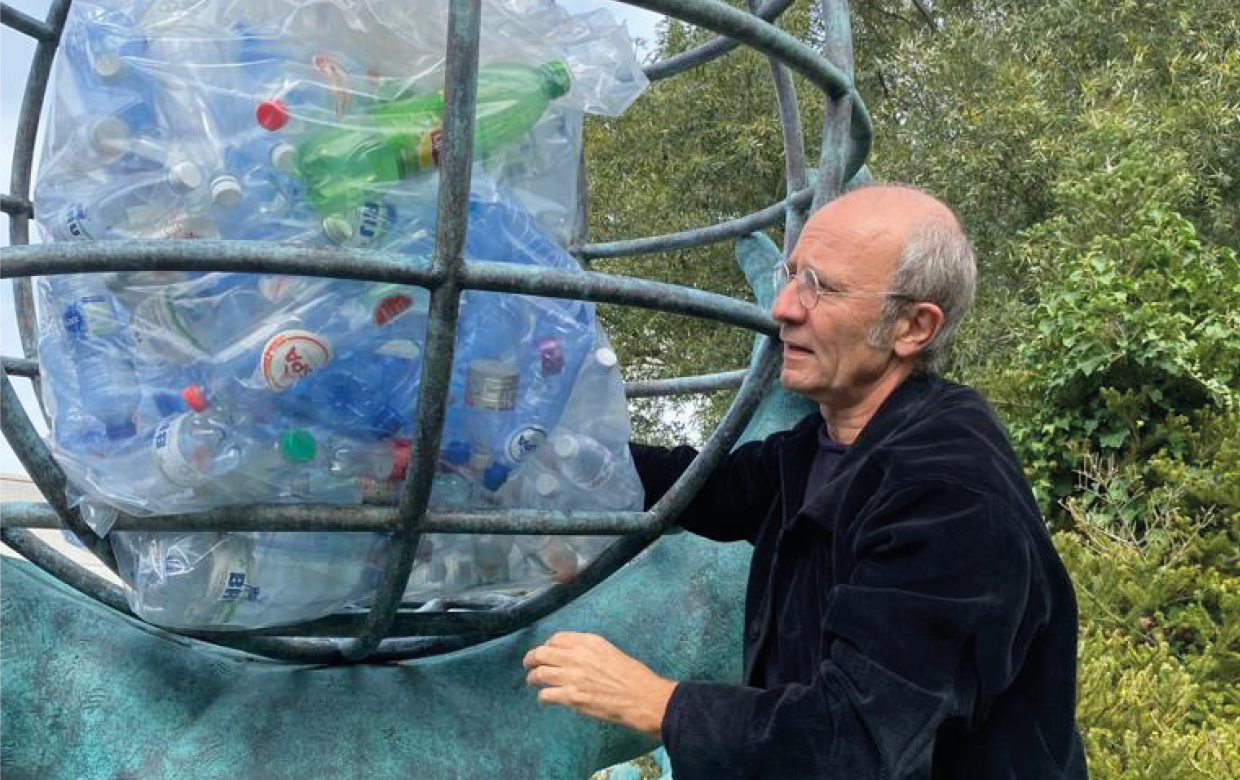
Then we thought of looking for inverted sponsoring – we’d contact certain makes and say “If you don’t donate this much money, we’ll use your very recognisable bottles and it’ll be a heap of serious negative publicity for you”. But this looked a bit like blackmail, so we dropped it, not very proud of ourselves.

Finally, we ordered 1,000 new empty plastic bottles, with no name on them. I’m sorry we had to produce such a load of plastic, but our aim was to expose the excessive use of plastic in the world.
